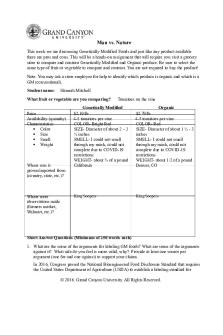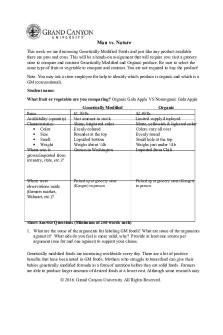Epi5 episomal ipsc reprogramming man PDF

| Title | Epi5 episomal ipsc reprogramming man |
|---|---|
| Author | Gustavo X |
| Course | Fisiología General |
| Institution | Universidad Nacional Autónoma de México |
| Pages | 40 |
| File Size | 995.8 KB |
| File Type | |
| Total Downloads | 5 |
| Total Views | 121 |
Summary
Download Epi5 episomal ipsc reprogramming man PDF
Description
Epi5™ Episomal iPSC Reprogramming Kit USER GUIDE For efficient, integration-free reprogramming of somatic cells into induced pluripotent stem cells (iPSC)
Catalog Number A15960 Publication Number MAN0008352 Revision A.0
Information in this guide is subject to change without notice. DISCLAIMER TO THE EXTENT ALLOWED BY LAW, LIFE TECHNOLOGIES AND/OR ITS AFFILIATE(S) WILL NOT BE LIABLE FOR SPECIAL, INCIDENTAL, INDIRECT, PUNITIVE, MULTIPLE, OR CONSEQUENTIAL DAMAGES IN CONNECTION WITH OR ARISING FROM THIS DOCUMENT, INCLUDING YOUR USE OF IT. Revision History Revision
Date
Description
A.0
March 2016
Rebrand; update legal boilerplates; update Methods
1.0
11 June 2013
Baseline for this revision
LIMITED USE LABEL LICENSE No. 465: Epi5™ Vectors Notice to Purchaser: The transfer of this product conveys to the recipient user the limited, non-transferable right to use the transferred amount of product to perform internal research for the sole benefit of the recipient user and for educational purposes. No right to resell this product or any of its components, or iPS cells generated by use of the product, or modifications (progenitors or fully differentiated cells) thereof is conveyed expressly, by implication, or by estoppels. This product, iPS cells made using this product and their modifications shall not be administered to – (a) human subjects, including for human clinical use and/or (b) animals for veterinary use (i.e., not for research) – for therapeutic, diagnostic or prophylactic purposes including but not limited to clinical applications, cell therapy, transplantation and/or regenerative medicine, nor shall be used for the creation of human embryos, and/or admixed embryos with embryos of animals including humans for any purpose including for research. This product, iPS cells made using this product and their modifications is for internal research purposes and is not for use in any of the following commercial applications: (i) use of iPS cells and progeny (but not modifications) for manufacture or quality control of any product; (ii) use of cells to provide a service, information or data to a third party for financial gain (financial benefit exceeds the cost of operating the transaction), except when performed by a not-for-profit research entity (not affiliated with a for-profit organization) not for financial gain, or performed on behalf of a third party having an appropriate license*; (iii) use of cells by or on behalf of recipient user for screening or later stage development of therapeutics, diagnostics, prophylactics (e.g., hit-to-lead, lead optimization), except when performed by or on behalf of a not-for-profit research entity for internal research and not for financial gain, or when performed in accordance with a separate Limited Sub License Agreement for use of LTC Pluripotent Cells executed in writing between recipient user and LTC; (iv) sale, lease distribution, transfer or license of cells to third parties for financial gain; (v) any sale, lease, distribution, transfer or license of iPS cells and progeny (but not modifications) by recipient user to for-profit entities, even if for research use. Any person or entity that wishes to perform commercial applications described above using this product, iPS cells derived from the use of this product, or modifications thereof, is required to take a license to cover the appropriate commercial application. An entity that wants to transfer iPS cells or progeny to a for-profit recipient shall notify the for-profit recipient that such recipient is required to take the appropriate license to use the materials for internal research of any type. Notwithstanding the foregoing, the following activities are not considered commercial applications for purposes of this label license: (a) basic research, including, without limitation, target discovery, target validation and assay development; (b) transfer of cells to not-for-profit research entity for its internal research not for financial gain; (c) compound screening and safety testing for development of therapeutics, diagnostics and prophylactics by academic and not-for-profit research entities for their non-commercial internal research; (d) license or commercialization of research results except where such results are drugs or drug candidates, iPS cells or modifications, or where such license or commercialization uses iPS cells or progeny. Other than rights granted herein, no other right, express or implied, is conveyed by the sale of this product. *For information on obtaining additional rights, please contact ou outlice tlice tlicensin nsin nsing@l g@l g@lifete ifete ifetechno chno chnolog log logies. ies. ies.com com or Out Licensing, Life Technologies, 5791 Van Allen Way, Carlsbad, CA 92008. Notice: If iPS cells and derivatives (hereafter “Materials”) generated by use of this product are transferred to other users in accordance with the terms of the label license for reprogramming technology set forth above and accompanying the product (hereafter “Label License”), the transferring party should notify the recipients of such Materials of these terms by transferring a copy of the Label License to the recipients. Corporate entity Life Technologies | Carlsbad, CA 92008 USA | Toll Free in USA 1 800 955 6288 Trademarks All trademarks are the property of Thermo Fisher Scientific and its subsidiaries unless otherwise specified. Parafilm is a registered trademark of Bemis Company, Inc. B-27 is a registered trademark of the Board of Trustees of Southern Illinois University. © 2016 Thermo Fisher Scientific. All rights reserved.
Contents Product information .................................................................................................................................... 4 Product description ...................................................................................................................................... 4 Contents and storage ................................................................................................................................... 4 Description of the system ............................................................................................................................ 5 Materials and equipment required ............................................................................................................ 7 Methods........................................................................................................................................................ 9 Guidelines for generating iPSCs................................................................................................................. 9 Reprogram fibroblasts ............................................................................................................................... 10 Reprogram StemPro™ CD34+ Cells (Feeder-Free Culture).................................................................... 13 Reprogramming StemPro™ CD34+ Cells (Feeder-Dependent Culture) .............................................. 16 Identify iPSC colonies ................................................................................................................................ 19 Live stain with antibodies ......................................................................................................................... 21 Pick iPSC colonies ......................................................................................................................................22 Detect episomal vectors by PCR ............................................................................................................... 24 Appendix A: Recipes ................................................................................................................................ 27 Media and reagents .................................................................................................................................... 27 Appendix B: Prepare culture vessels ..................................................................................................... 30 Coat culture vessels with Geltrex™ matrix .............................................................................................. 30 MEF culture dishes ..................................................................................................................................... 31 Appendix C: Cryopreserve iPSCs ........................................................................................................... 33 Freeze iPSCs (Feeder-Free Culture) ......................................................................................................... 33 Freeze iPSCs (Feeder-Dependent Culture) ............................................................................................. 34 Appendix D: Ordering information .......................................................................................................... 36 Accessory products .................................................................................................................................... 36 Documentation and support .................................................................................................................... 39 Customer and technical support .............................................................................................................. 39
Epi5™ Episomal iPSC Reprogramming Kit User Guide
3
Product information Product description Induced pluripotent Induced pluripotent stem cells (iPSCs) are genetically reprogrammed adult cells which exhibit a pluripotent stem cell-like state similar to embryonic stem cells. stem cells (iPSC) The Invitrogen™ Epi5™ Episomal iPSC Reprogramming Kit contains an optimized mixture of vectors that can reprogram somatic cells to iPSCs without integration. The Epi5™ Episomal iPSC Reprogramming Kit contains five reprogramming vectors in two separate tubes. Tube A contains an optimized mixture of three episomal vectors that deliver the five reprogramming factors Oct4, Sox2, Klf4, L-Myc, and Lin28. Tube B contains an optimized mixture of two vectors expressing mp53DD (a dominant negative mutation of p53) and EBNA1, which together improve the reprogramming efficiency of the system. The Epi5™ Episomal iPSC Reprogramming Kit contains sufficient material for 20 reprogramming experiments.
Contents and storage Epi5™ Episomal iPSC Reprogramming Kit (Cat. No. A15960) Contents Epi5™ Reprogramming Vectors (Tube A)
Epi5™ p53 & EBNA Vectors (Tube B)
4
Amount 20 µL
20 µL
Vectors
Genes
pCE-hOCT3/4
Oct4
pCE-hSK
Sox2, Kfl4
pCE-hUL
L-Myc, Lin28
pCE-mP53DD
mp53DD
pCXB-EBNA1
EBNA1
Storage
Epi5™ Episomal iPSC Reprogramming Kit User Guide
–20°C
Description of the system Induced pluripotent Induced pluripotent stem cells (iPSCs) are genetically reprogrammed adult cells which exhibit a pluripotent stem cell-like state similar to embryonic stem cells. stem cells (iPSC)
While these artificially generated cells are not known to exist in the human body, they show qualities remarkably similar to those of embryonic stem cells (ESC); thus, they are an invaluable new source of pluripotent cells for drug discovery, cell therapy, and basic research.
There are multiple methods to generate iPSCs, including retrovirus-mediated gene transfection and chemical induction. While retroviral vectors require integration into host chromosomes to express reprogramming genes, DNA-based vectors and plasmid vectors exist episomally and do not require integration. The Epi5™ Episomal iPSC Reprogramming Kit contains an optimized mixture of five vectors that can reprogram somatic cells to iPSCs without integration.
Epi5™ Reprogramming Vectors
The Epi5™ Reprogramming Vectors contain an optimized mixture of three episomal vectors with an oriP/EBNA-1 (Epstein-Barr nuclear antigen-1) backbone for delivering the reprogramming genes, Oct4, Sox2, Lin28, L-Myc, and Klf4. High transfection efficiency due to oriP/EBNA-1 mediated nuclear import and retention of vector DNA allows iPSC derivation in a single transfection. In addition, silencing of the viral promoter driving EBNA-1 expression and the loss of the episomes at a rate of ~5% per cell cycle due to defects in vector synthesis and partitioning allows the removal of episomal vectors from the iPSCs without any additional manipulation.
Epi5™ p53 & EBNA Vectors
Epi5™ p53 & EBNA Vectors provide additional improvements to the reprogramming system. The p53 protein is highly involved in cell cycle regulation and tumor suppression. With the activation of cytotoxic responses, p53 expression results in cell cycle arrest or cell death to prevent further complications within the system. Knockdown of p53 has been shown to improve reprogramming efficiencies as well as to prevent differentiation via the introduction of a variety of knockdown agents. The mp53DD is a dominant negative mutation of the p53 protein providing higher efficiency knockdown than traditional shRNA systems. The presence of this gene in an episomal system allows for transient expression of the dominant negative mutant over an extended period of time, diluting out with normal passaging of iPSC. Supplemental expression of the EBNA1 gene from a vector solely dedicated to this purpose allows for high expression of plasmids containing the origin of replication present on the reprogramming plasmids. This plasmid, however, lacks the OriP gene, thus providing only transient expression for the early stages of reprogramming.
Epi5™ Episomal iPSC Reprogramming Kit User Guide
5
Comparison of episomal reprogramming vectors
The table below provides a comparison of the Episomal iPSC Reprogramming Vectors (Cat. no. A14703) and the Epi5™ Episomal iPSC Reprogramming Kit (Cat. no. A15960). Episomal iPSC Reprogramming Vectors Genes
Vector size Polycistronic elements Promoter Small molecules
Oct4, Sox2, Nanog, Lin28, Klf4, and L-Myc
Epi5™ Episomal iPSC Reprogramming Kit Oct4, Sox2, Lin28, L-Myc, Klf4, mp53DD, additional EBNA
12–17.5 kb
6–11 kb
IRES element
2A sequence
EF1α
CAG
required
not required
Number of vectors 3 5 As a transgene-free and viral-free reprogramming system, it is a safe alternative to other reprogramming methods such as lentiviral delivery for all stages of iPSC research.
• Advantages of Epi5™ Episomal iPSC Reprogramming Kit •
6
Allows the reprogramming of a variety of somatic cell types and provides flexibility in somatic cell selection.
•
Optimized for feeder-free reprogramming, enabling defined and feeder-free reprogramming when used with the Essential 8™ Medium.
•
High transfection efficiency due to oriP/EBNA-1 mediated nuclear import and retention of vector DNA allows iPSC derivation in a single transfection.
•
The episomal vectors are removed from the iPSCs without any further manipulation due to the silencing of the viral promoter driving EBNA-1 expression and the loss of the episomes due to defects in vector synthesis and partitioning.
•
Do not require the use of small molecules for reprogramming.
Epi5™ Episomal iPSC Reprogramming Kit User Guide
Materials and equipment required Cells and vectors
•
Epi5™ Episomal iPSC Reprogramming Kit (Cat. No. A15960)
•
Human neonatal foreskin fibroblast cells (strain BJ; ATCC no. CRL2522)
Media and reagents •
Characterization reagents
Reagents for PCR detection of episomal vectors
Dulbecco’s Modified Eagle Medium (DMEM) with GlutaMAX™-I (high glucose) (Cat. No. 10569)
•
KnockOut™ DMEM/F-12 (Cat. No. 12660-012)
•
Fetal Bovine Serum (FBS), ESC-Qualified (Cat. No. 16141-079)
•
MEM Non-essential Amino Acids (NEAA) (Cat. No. 11140-050)
•
Basic Fibroblast Growth Factor (bFGF), recombinant human (Cat. No. PHG0264)
•
Bovine Albumin Fraction V Solution (BSA) (Cat. No. 15260-037)
•
Essential 8™ Medium, consisting of Essential 8™ Basal Medium and Essential 8™ Supplement (50X) (Cat. No. A1517001)
•
DMEM/F-12 with HEPES (Cat. No. 11330-057)
•
N-2 Supplement (100X) (Cat. No. 17502-048)
•
B-27™ Serum-Free Supplement (50X) (Cat. No. 17504-044)
•
GlutaMAX™-I Supplement (Cat. No. 35050-061)
•
β-mercaptoethanol (Cat. No. 21985-023)
•
Geltrex™ LDEV-Free hESC-Qualified Reduced Growth Factor Basement Membrane Matrix (Cat. No. A1413301)
•
0.05% Trypsin-EDTA (1X), Phenol Red (Cat. No. 25300-054)
•
UltraPure™ 0.5 M EDTA, pH 8.0 (Cat. No. 15575-020)
•
Dulbecco’s PBS (DPBS) without Calcium and Magnesium (Cat. No. 14190144)
Use one of the following: •
TRA-1-60 Alexa Fluor™ 488 Conjugate Kit for Live Cell Imaging (Cat. No. A25618)
•
TRA-1-60 Alexa Fluor™ 594 Conjugate Kit for Live Cell Imaging (Cat. No. A24882)
•
TRA-1-60 Alexa Fluor™ 555 Conjugate Kit for Live Cell Imaging (Cat. No. A24879)
•
CellsDirect Resuspension & Lysis Buffers (Cat. No. 11739-010)
•
AccuPrime™ Taq DNA Polymerase High Fidelity (Cat. No. 12346-086)
•
Forward and Reverse primers for PCR (see page 26)
Epi5™ Episomal iPSC Reprogramming Kit User Guide
7
Equipment
•
Electroporation instrument. Note: The protocols in this user guide describe electroporation using the Neon™ Transfection System (Cat. no. MPK5000) and the Neon ™ Transfection System 10 µL Tip Kit (Cat. no. MPK1025). Electroporation parameters must be optimized for other electroporation devices.
8
•
Sterile cell culture hood (i.e., biosafety cabinet) equipped with a stereomicroscope
•
Inverted microscope
•
Incubator set at 37°C, 5% CO2
•
Water bath set at 37°C
•
Sterile serological pipettes (5-mL, 10-mL)
•
Centrifuge
•
15-mL centrifuge tubes
•
60-mm and 100-mm tissue culture-treated dishes
•
6-well tissue culture-treated plates
•
25 gauge 1 inch needle
Epi5™ Episomal iPSC Reprogramming Kit User Guide
Methods Guidelines for generating iPSCs Experiment guidelines
•
To maintain sterile culture conditions, carry out all of the procedures in this manual using sterile laboratory practices in a laminar flow hood.
•
You can use the Epi5™ Episomal iPSC Reprogramming Kit to reprogram a wide range of cell types in proliferative and quiescent states. However, the reprogramming efficiency may vary between different cell types.
•
Each reprogramming experiment requires 1 × 105 cells and 1 μL each of the Epi5™ Reprogramming Vectors and the Epi5™ p53 & EBNA Vectors.
•
The Epi5™ Episomal iPSC Reprogramming Kit contains sufficient material for 20 reprogramming experiments. Before use, briefly centrifuge the thawed vectors to collect them at the bottom of the ...
Similar Free PDFs

Epi5 episomal ipsc reprogramming man
- 40 Pages

Highway man
- 8 Pages

Age of man - Age of Man
- 3 Pages

BUS MAN Notes
- 43 Pages

questions on lan /man
- 7 Pages

Assignment 2 - Demolition Man
- 9 Pages

Reasonable man test crim
- 3 Pages

Man vs Nature
- 3 Pages

Man VS Nature Worsksheet
- 3 Pages

Fertiliteit van de man
- 12 Pages

Pengertian LAN , MAN ,WAN
- 39 Pages

Rain Man - Grade: 75
- 7 Pages

The Mismeasure of Man
- 2 Pages

Reseña Herzog Grizzly Man
- 2 Pages

Man vs Nature Assignment
- 2 Pages
Popular Institutions
- Tinajero National High School - Annex
- Politeknik Caltex Riau
- Yokohama City University
- SGT University
- University of Al-Qadisiyah
- Divine Word College of Vigan
- Techniek College Rotterdam
- Universidade de Santiago
- Universiti Teknologi MARA Cawangan Johor Kampus Pasir Gudang
- Poltekkes Kemenkes Yogyakarta
- Baguio City National High School
- Colegio san marcos
- preparatoria uno
- Centro de Bachillerato Tecnológico Industrial y de Servicios No. 107
- Dalian Maritime University
- Quang Trung Secondary School
- Colegio Tecnológico en Informática
- Corporación Regional de Educación Superior
- Grupo CEDVA
- Dar Al Uloom University
- Centro de Estudios Preuniversitarios de la Universidad Nacional de Ingeniería
- 上智大学
- Aakash International School, Nuna Majara
- San Felipe Neri Catholic School
- Kang Chiao International School - New Taipei City
- Misamis Occidental National High School
- Institución Educativa Escuela Normal Juan Ladrilleros
- Kolehiyo ng Pantukan
- Batanes State College
- Instituto Continental
- Sekolah Menengah Kejuruan Kesehatan Kaltara (Tarakan)
- Colegio de La Inmaculada Concepcion - Cebu
